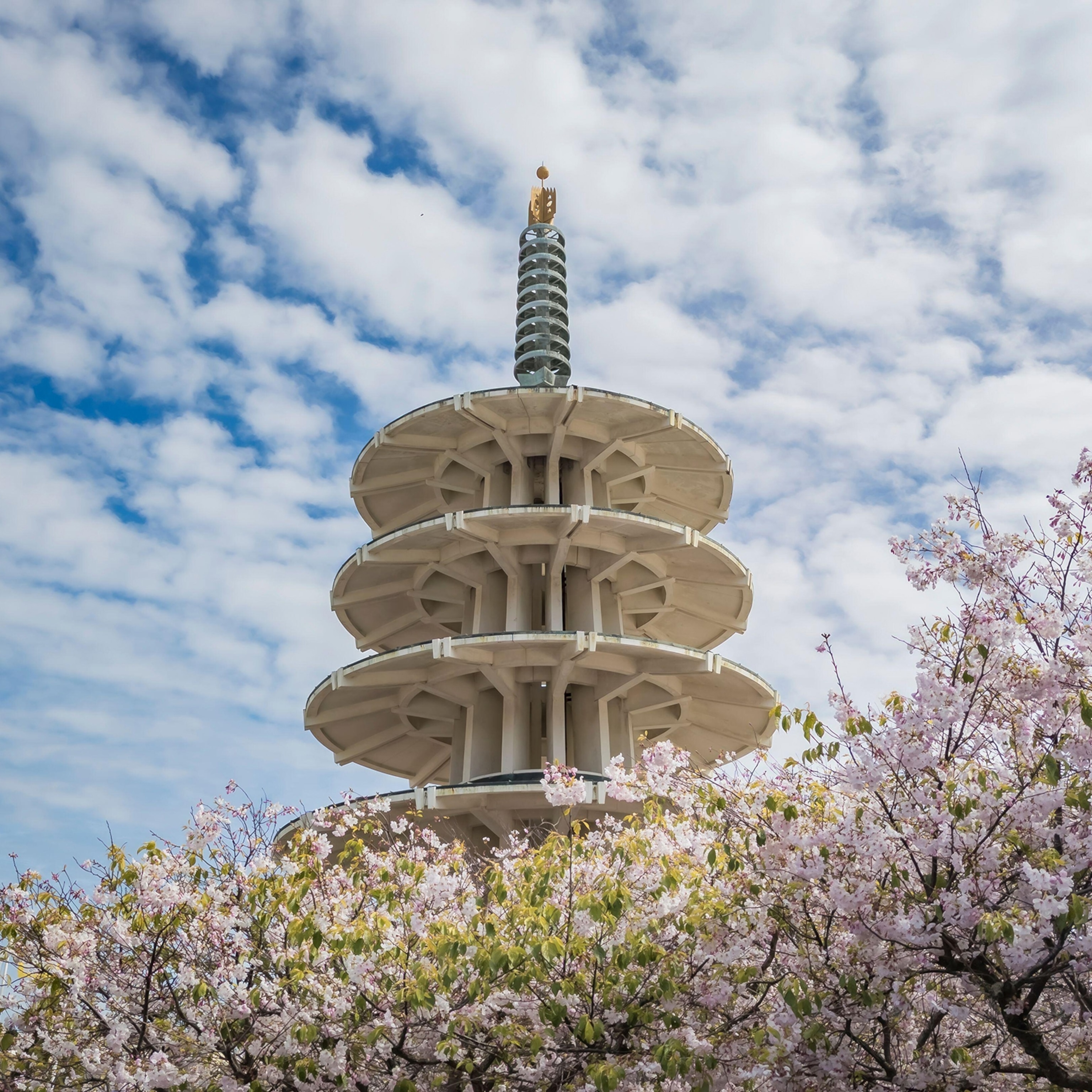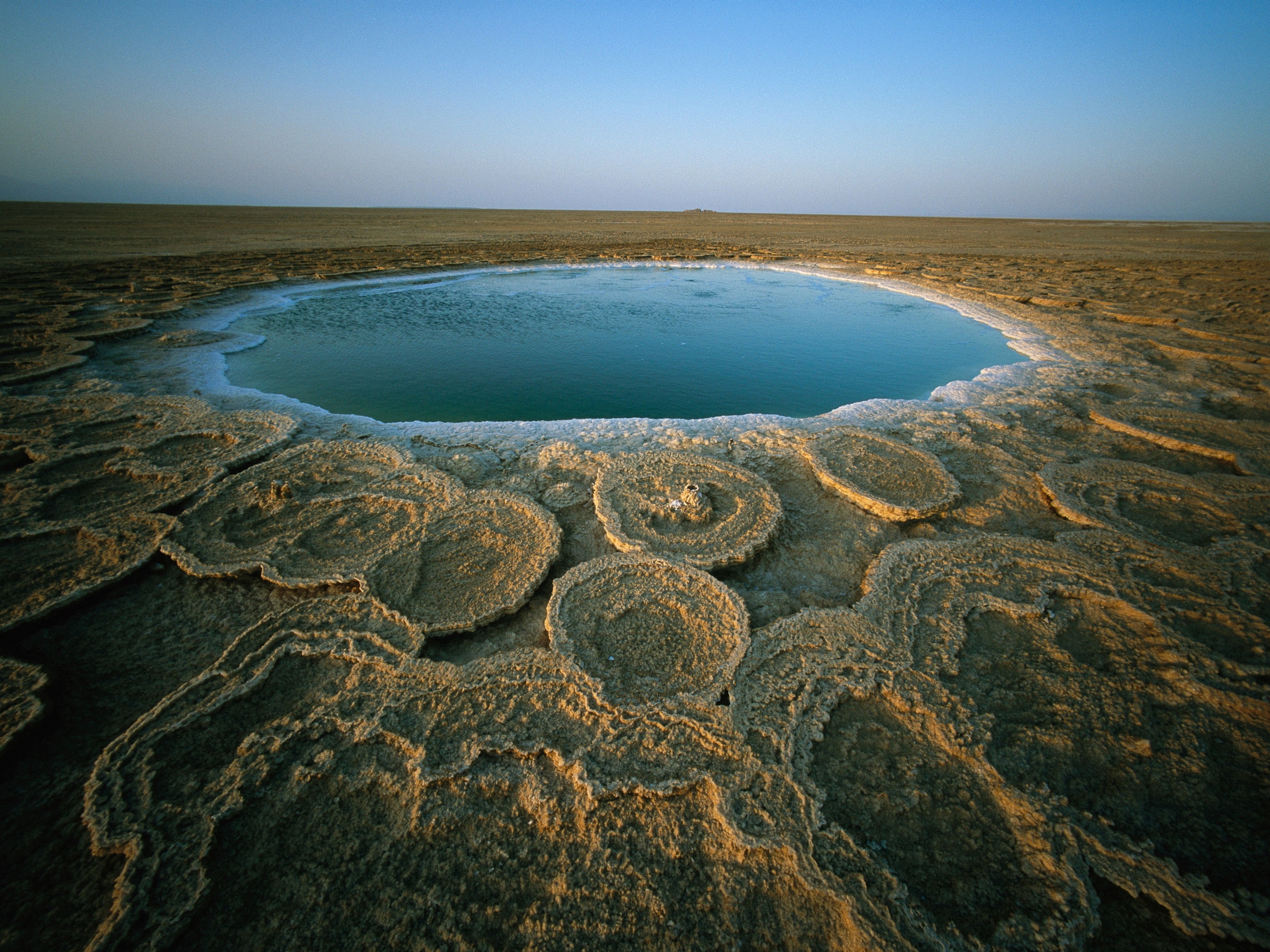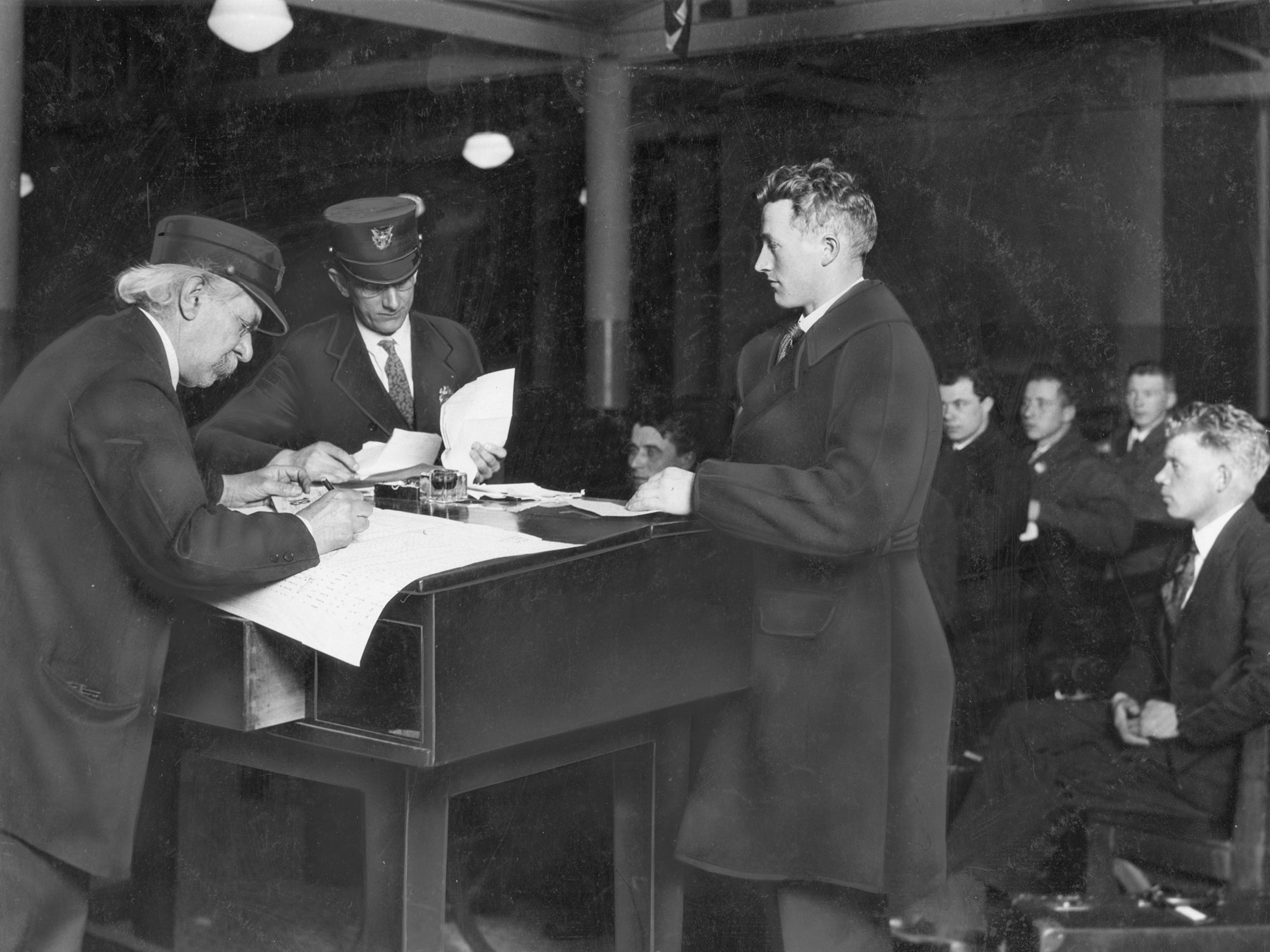In L.A.’s Koreatown, travelers find a ‘second Seoul’
Once a cultural way station for immigrants, this ever-evolving neighborhood offers an authentic taste of Korean culture.
This isn’t the Koreatown of my childhood.
I’m in the lobby of the Line LA hotel, where a deejay spins hip-hop, a trendy crowd samples vegan nachos, and more than a few are sipping “Purple Haze” cocktails.
Against the din, a concierge quietly hands me a slip of paper that reads “BCD Tofu.” It’s not the password to the hotel’s Wifi or its speakeasy. Instead, it’s the name of a long-standing, late-night Korean restaurant serving comfort in the form of spicy soondubu chigae tofu stew.
More than that, it’s an unexpected reference to my immigrant roots. My family came to America in 1974, a year after I was born, and made our way to Koreatown. Back then, there were no glamorous hotel bars and certainly no speakeasies.
For immigrants like us, this neighborhood was a familiar way station in the inscrutable America of the 1970s. In this bustling, multicultural patch east of Miracle Mile and west of Art Deco downtown, people spoke our language and ate the same foods. In Koreatown, we found the password to unlock the “American Dream” we had traveled so far to find.
Today, my parents would feel disoriented, too. Like many places across the country, Koreatown is changing. It’s a neighborhood literally on the rise with construction cranes crowding the landscape. There are fewer mom-and-pop restaurants—some, victims of the pandemic—and more millennial-owned cafés. It’s a hub for business travelers from abroad.
But amid celebrity-backed barbecue restaurants and gleaming new hotels, vestiges of the old Koreatown still exist. Visitors find it in the riot of hangul (Korean language) signs, old-school malls like Koreatown Plaza, and residents like my aunt Young-hee, who has lived her entire adult life here and never learned English.
On Interstate 10 near the Normandie Avenue exit, a sign installed in 1982 still beckons to the heart of Koreatown. It draws day-trippers looking to dip into the “hallyu” trend of K-dramas, K-pop, and K-beauty. Netflix has even gotten into the spirit; recently the streaming service brought a real-life version of its hit Korean series Squid Game to Koreatown, where fans participated in the show’s version of “Red Light, Green Light” and ate dalgona cookies, a Korean street snack.
The same traffic sign calls to me, too. After being away for more than 20 years, I fall for the familiar siren song of traffic and the hodgepodge of Korean, Spanish, and English phrases spoken on street corners. In these fraught times, it’s all a reassuring reminder that I can always find my way home.
One man’s vision
Los Angeles County has the largest population of Koreans outside South Korea and the biggest in the United States. Yet within Koreatown’s 2.9-square-mile zone, Koreans were never the majority. For nearly 50 years, the county’s most diverse and dense neighborhood was primarily Hispanic.
“In the past, Koreatown was really kind of a misnomer,” says Kyeyoung Park, an anthropology professor at UCLA, who has studied the neighborhood for decades. “At least half the residents used to be immigrants and refugees from Central America and Mexico.” In recent years, Koreatown has become even more diverse, with people arriving from Bangladesh, Thailand, Mongolia, and the Philippines.
How Koreatown rose amid such a mix of cultures is widely credited to one man: Hi Duk Lee. He was among the so-called “second wave” of Korean immigrants who arrived after the Hart-Celler Act of 1965 abolished an earlier immigration quota system. This second wave substantially added to the approximately 7,400 people who first arrived in Hawaii and then the continental U.S. after an 1882 treaty of “amity and commerce” between the U.S. and Korea’s Choson Dynasty.
Armed with a chemical engineering degree, Lee (who died in 2019 at 79 years old) had big dreams. He wanted his country people to have a connection to their culture. “I planned to make Koreatown. Chinese people have Chinatowns everywhere: New York, San Francisco, Los Angeles, Montebello. But there’s no Koreatown,” he told the Los Angeles Times in 2001.
In 1971 he laid the foundation for that dream with Olympic Market, which sold imported Korean staples. In 1975, VIP Palace followed, reportedly the city’s first Korean restaurant. Both were built with upturned navy-tile roofs recalling the Blue House, Seoul’s presidential residence and executive office. While the market no longer exists, VIP Palace enjoys a new life as Guelaguetza, an acclaimed Oaxacan eatery that retains the Korean-style architecture.
By the close of the decade, the seeds Lee planted across five blocks blossomed into a buzzing “Second Seoul,” capped by a Koreatown sign installed in 1975, on Olympic Boulevard and Western Avenue.
(Why does the U.S. have so many Chinatowns?)
A year later, that sign was a beacon of hope for my family. We had been driving for a week from Houston, Texas, caravanning with a new Korean friend who had told my parents about Koreatown. After the shock of descending into a smog-choked L.A. basin, the sign was a welcome sight. “I was so surprised,” my mom recalls. “Appah [dad] say: ‘It’s just like Korea!’”
By 1985, nearly 800,000 Koreans had settled in America; many found their way into this community. Here, they built a family tree that helped countless newly landed immigrants find jobs, homes, and even cash to tide them over till payday.
My family found an apartment in a 1940s courtyard building on Kingsley Drive that still stands today. Looking at it now, the driveway seems too small to have been our childhood playground, when just a traditional Korean floor mat protected us from the oil stains.
Long before Facebook, the community’s social network extended through distance, and even time. Just recently, I learned that a close friend of mine had lived on our block, a few years after we had moved to the suburbs.
The next best thing
For people who can’t travel to Seoul, Koreatown is the next best thing. The jjimjjilbangs (Korean spas), bingsoo (shaved ice) cafes, and noraebangs (karaoke rooms) offer a slice of the Land of Morning Calm to locals and visitors alike.
On Western Avenue and Wilshire Boulevard, Madang Mall is like the South Korean capital city in miniature. At the entrance, a stone pathway calling to mind Cheonggyecheon stream leads the way to a street-food stall selling potato-coated corn dogs, an atelier with modern takes on the traditional hanbok national dress, and a K-pop store crammed with CDs straight from Gangnam.
“Some of our customers say today is their ‘Koreatown day,’ where they go to the Korean spa, and they have soondubu or naengmyun [cold noodles] and like a bingsoo place,” says Dong Hyuk Lee, co-owner of Hanchic, a newly opened Korean fusion restaurant. “Now they have all these Netflix shows, so they [want to try] what they eat in the Korean dramas. They’re curious, so they go to K-town to do all that.”
“K-town has that cool allure,” says Katherine Kim, a senior editor overseeing Koreatown Youth and Community Center’s oral history and community journalism program, about the non-Koreans moving in. “It’s part of the hallyu allure; the Parasite effect.”
That allure goes back even before the pandemic, notes Monica Lee, whose restaurant Beverly Soon Tofu opened in 1986 and closed last year due to the pandemic. Lee says her customers often told her that they saved their money for a weekend blowout in Koreatown, some saying they visited every week.
(Here’s why COVID-19 couldn’t stop K-pop’s global rise.)
Open door policy
Signs of change are everywhere, spurred not by cultural necessity, but by opportunity. A new generation is eyeing the future, blending East and West, old and new, in trendy places such as Hanchic, Open Market, and Document Coffee. Non-Koreans have added to the mix with places like Cassell’s hamburgers in the remodeled Hotel Normandie, Mo’s House of Axe bar, and Openaire, a Michelin-starred fine-dining restaurant in the Line LA.
Residents priced out of the Westside and downtown have moved into Koreatown, and developers have followed suit. Even with a pandemic, a development boom is underway with dozens of multiuse projects on the horizon, including a few new hotels.
(This block-by-block map tells the story of migration across two and half centuries in America.)
“There’s an amalgamation of new condo buildings and then buildings that have character, so you get people who want both of those things in the community,” says Kim, who authored a photo history of Koreatown. “I think change really is inevitable in that sense because you’re seeing a demographic shift in the community and an economic shift in L.A. in general. Other neighborhoods are harbingers of this, like Sawtelle.” Located west of UCLA, the primarily Japanese-American retail zone has gentrified over the past 20 years.
While he acknowledges that many new businesses aren’t owned by people with Koreatown ties, Dong Hyuk Lee says that they help dispel stereotypes and myths for those still hesitant to visit the neighborhood. “Westside people still think [Koreatown] is dangerous, but I think K-town is making people feel comfortable,” he says. “Once they come, they get to see a lot of Korean culture.”
This change brings additional challenges, especially as the community becomes more linguistically and culturally diverse, says Kim. In-language, in-culture mental health services, care for aging Koreans and Hispanic residents, and financial help for the small businesses affected by COVID-19 are among the concerns needing attention, she says.
Still, some focus on the upside. “Over the years, we’ve been grateful that Koreatown has evolved,” says J.J. Lee, Monica Lee’s daughter. “People like Anthony Bourdain came to our restaurant and opened the door for more people to try my mom’s cooking.”
The same could be said about Koreatown. Although immigration from South Korea has declined in recent years, Koreatown’s cultural melting pot continues to expand. It’s where a new generation can preserve cultural ties, while opening the door for newcomers to try Oaxacan, Bangladeshi, and even Mongolian food.
Or simply a lava-hot bowl of spicy bean curd stew at 10 p.m.







